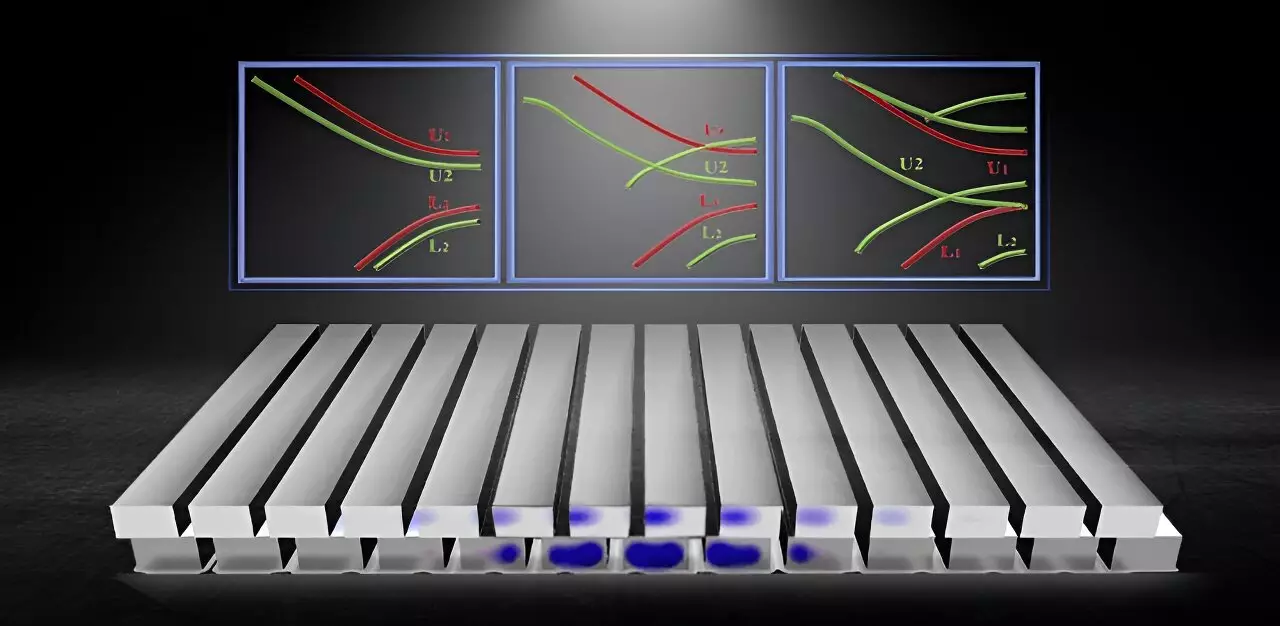When different lattices come together, they create a moiré superlattice that gives rise to remarkable phenomena like superconductivity and optical solitons. Central to this realm is the moiré flatband, which plays a crucial role in shaping advanced light-matter interactions. Controlling flatbands is a significant superpower in moiré physics and its applications. Traditionally, flatbands are generated through specific structures and manipulated by adjusting rotation angles and spacings between lattice layers. However, a recent collaboration between the University of Electronic Science and Technology of China, Anqing Normal University, Guangxi University, and Nankai University has proposed a new approach to control moiré flatbands by altering the band offset of two photonic lattices in the parameter space.
The research team discovered that by adjusting the band offset, two robust groups of flatbands can exist within a broad range of band offsets. These flatbands offer stability and facilitate precise control over structural parameters, opening up new opportunities in moiré photonics. The resonant frequencies of these robust flatbands can be adjusted by altering structural parameters, allowing the creation of novel multiresonant moiré devices.
To achieve this breakthrough, the researchers started with a mismatched silicon-based bilayer moiré superlattice and varied the thickness of one layer to adjust the band offset. Through calculations of the superlattice band structure at different band offsets, they observed how the moiré flatbands were affected. They noticed that certain flatbands remain stable within a broad range of band offset, revealing the power of band offset adjustments in controlling moiré flatband resonance frequencies.
To confirm the feasibility of high-quality doubly resonant moiré superlattices, the researchers systematically investigated the localized modes originating from the two groups of robust flatbands in moiré superlattices with finite size. This investigation demonstrated the potential for crafting high-quality moiré superlattices with doubly resonant properties.
To understand how the robust flatbands were formed, the authors developed a diagrammatic model based on the coupled-mode theory. This model incorporated the structural characteristics of moiré superlattices and provided insights into the formation of these flatbands. Full-wave calculations were also integrated into the diagrammatic model to predict the field distribution of the robust flatbands, further validating the findings.
The discovery of controlling moiré flatbands by tuning the band offset in the parameter space holds the key to unlocking nontrivial superlattices and unraveling the mysteries of flatband emergence and disappearance. This breakthrough opens new horizons for exploring uncharted paths in moiré physics. With the ability to command the frequencies of these flatbands, the potential for creating multi-resonant and high-quality moiré superlattices becomes a reality.
Moreover, the diagrammatic model developed by the authors not only serves as a tool but also provides a window into the world of flatband formation across diverse moiré superlattices. This model offers insights into the underlying mechanisms and can inspire future explorations into innovative moiré devices and the captivating realm of moiré physics.
The ability to control moiré flatbands through band offset adjustments presents a significant advancement in the field of moiré physics. The research conducted by the collaborative team reveals the potential for creating stable and robust flatbands within a broad range of band offsets. By manipulating structural parameters, novel moiré devices with customized resonant frequencies can be developed. This breakthrough not only unlocks new opportunities in moiré photonics but also contributes to our understanding of flatband formation and disappearance. The diagrammatic model developed by the researchers serves as a valuable tool for further investigations and opens doors to innovative applications in moiré physics.


Leave a Reply